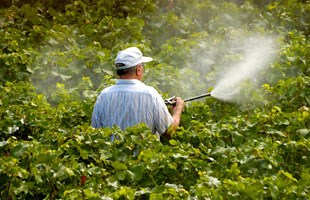The face of farming could see some rather dramatic changes in the years just ahead as new rules, regulations and realities begin to be imposed from above and felt at the farm level.
Recent farm publication headlines suggest some dramatic changes could lie just ahead.
One of the first changes might not seem especially significant, but it is an example of the reasons farmers may see changes in what they are allowed to do on their farmers.
Health Canada is proposing an end the use of strychnine to control ground squirrels and is seeking public input on the matter until Sept. 27.
The proposal stems from a regular review of pesticides under the Pest Management Regulatory Agency.
Health Canada has said strychnine kills ground squirrels, also commonly called gophers, in its consultation document. However, and not surprisingly, they also noted it also kills non-target species that might eat either the poison-treated grain used to attract gophers or scavengers that eat the dead rodents. That is bad news for all sorts of animals, hawks, owls, ravens, coyotes and perhaps most significantly in creating a push for a ban, the endangered burrowing owl and swift fox.
There is clearly a demand from the broader general public to preserve biodiversity whenever possible, and the efforts to protect the burrowing owl and swift fox have been significant as the pair are basically the poster children for disappearing native Prairie and its natural inhabitants.
No farmer wants to see the owls, foxes or other animals killed either, but they do recognize a need to control the ground squirrel as it burrows and mounds are a danger to cattle and machinery, and strychnine has been a tool in that control.
But there are increased environmental concerns at play now, and that may well mean a ban on strychnine in the not so distant future.
And, in terms of environmental concerns there has been significant media coverage over bee deaths and the loss of wild pollinators.
More than one accusing finger has been pointed at the family of insecticides known as neonicotinoids as one of the culprits.
Well, over the next five years neonicotinoids will be phased out for Canadian use.
The pesticide, used in Western Canada mainly as a seed treatment, will be unavailable to farmers in some forms beginning in 2021.
The decision comes down from the federal Pest Management Regulatory Agency, a decision which follows an earlier move by the European Union to eliminate it. In the U.S. regulators have gone the other direction, opening up its use in some cases.
This will again have an impact on how farmers do things in Western Canada as neonicotinoids are used to control a range of crop pests such as flea beetles in canola, and seed corn maggot, in peas, pea-leaf weevil and wireworms in wheat and other crops.
Certainly the area of crop protection products will be the one where environmental concern pressures will likely have their greatest effect.
But others factors will have an impact, too.
Glyphosate is a widely used weed control product which has come under major scrutiny in the last few years in terms of whether the herbicide first brought to the market in 1974, causes cancer.
Recently a California jury found Monsanto liable in a lawsuit filed by a man who alleged the company鈥檚 glyphosate-based products, including the oft-farm used Roundup, caused his cancer and ordered the company to pay $289 million in damages. It is estimated the company faces more than 5,000 similar lawsuits across the United States.
While there will no doubt be appeals dragging on for years, the final result could again cause a major change in how farmers manage their crops.
Change is constant in all things, but farmers appear to be facing a number of major ones based on new looks at old products.
Calvin Daniels is Editor with Yorkton This Week.聽




